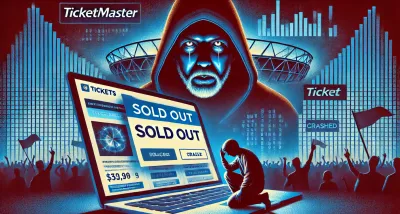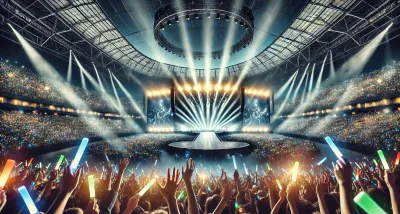The world of live music in 2025 is a roaring testament to resilience. After the COVID-19 pandemic shuttered venues and silenced stages for nearly two years, concerts have roared back with a vengeance, fueled by pent-up demand and a hunger for shared experiences. Megastars like Taylor Swift and Beyoncé have shattered records, drawing millions to stadiums and rewriting the economics of touring. Yet this boom comes with a catch: soaring ticket prices and controversies, particularly around Ticketmaster, have sparked outrage, lawsuits, and a reckoning for the live music industry. What’s driving this unprecedented surge, and why has the cost of entry become a battleground? From sold-out arenas to antitrust debates, the post-pandemic live music landscape is a symphony of triumph and tension.
The Great Comeback: A Post-Pandemic Boom
When the pandemic hit in 2020, live music ground to a halt. Venues closed, tours vanished, and artists pivoted to livestreams. By 2021, tentative reopenings with mask mandates drew a meager 35 million attendees globally, per Live Nation data. Fast-forward to 2023, and the scene transformed: attendance skyrocketed 20% to 145 million, a record-breaking leap as reported by Live Nation's 2023 results. The catalyst? A collective craving for connection after years of isolation. “People wanted to feel alive again,” says music historian Lena Carter. “Concerts became the ultimate release.”
Leading this charge were Taylor Swift and Beyoncé. Swift’s Eras Tour, launched in 2023, became the first to gross over $1 billion, a feat Pollstar predicts will double by its end in 2025. Beyoncé’s Renaissance World Tour followed, raking in $579 million across 57 shows, her silver-clad performances a cultural juggernaut. These weren’t just concerts—they were events, drawing fans willing to travel continents and spend fortunes. In North America alone, ticket sales for the top 100 tours jumped from $4.77 billion in 2022 to $6.63 billion in 2023, a 46% surge, per Pollstar.
The boom wasn’t limited to megastars. Mid-tier acts like Olivia Rodrigo and Morgan Wallen packed arenas, while festivals like Coachella saw record demand. A 2024 report from Allied Market Research forecasts the global live events industry—spanning concerts to sports—will hit $1.2 trillion by 2032, doubling its pre-pandemic value. “It’s revenge spending on steroids,” says industry analyst Mark Mulligan. “Fans locked down for years unleashed their wallets.”
Superstars Setting Records

Taylor Swift and Beyoncé didn’t just ride the wave—they redefined it. Swift’s Eras Tour, a three-hour odyssey through her discography, sold 2.4 million tickets in a single presale day, crashing Ticketmaster’s servers and sparking a federal probe. By 2025, her 150+ shows have drawn over 5 million fans, with average ticket prices at $253 yielding $10-$13 million nightly, per Forbes estimates. Her concert film, a $15 million production, grossed $125 million domestically in its opening weekend, proving her pull transcends stages, as noted by Rolling Stone.
Beyoncé’s Renaissance Tour was equally seismic. Kicking off in Stockholm in 2023, it spanned 12 countries, blending hits with covers and featuring her daughter Blue Ivy as a dancer—a viral moment that fueled its buzz. The tour’s $579 million haul made it one of history’s highest-grossing, with fans shelling out $147 on average per ticket, according to Variety. Her Los Angeles birthday show, attended by stars like Meghan Markle and Jeff Bezos, epitomized its cultural heft. “Beyoncé turned concerts into pilgrimages,” says critic Jia Tolentino.
Other heavyweights joined the fray. The Weeknd’s After Hours til Dawn tour broke London Stadium’s two-night attendance record with 160,000 fans, while Coldplay’s Music of the Spheres World Tour and Elton John’s Farewell Yellow Brick Road finale added millions to the 2023 tally. These tours weren’t cheap—Swift and Beyoncé’s prices dwarfed the $91 average for top tours in 2019 (adjusted to $115 in 2023 dollars)—but demand held firm. “Fans saw these as once-in-a-lifetime,” says Live Nation CEO Michael Rapino.
The Price of Admission: Ticket Pricing Soars
The boom’s dark side is cost. Post-pandemic, ticket prices have soared beyond inflation. Pollstar data shows the average top-100 tour ticket rose from $91.18 in 2019 to $122.84 in 2023—a 35% jump unadjusted, as detailed by Statista. For megastars, it’s worse: Swift’s Eras tickets averaged $253, Beyoncé’s $147, and Bruce Springsteen’s 2023 shows hit $5,000 via Ticketmaster’s dynamic pricing. “The days of $50 arena seats are gone,” says Ticket News editor Dave Clark. “Demand outstripped supply, and prices followed.”
Dynamic pricing, where costs fluctuate with demand, is a key culprit. Ticketmaster, controlling 80% of U.S. primary ticket sales, uses this model to maximize revenue, splitting fees with artists and venues. A $290 Blink-182 ticket balloons to $337.90 with a $42.90 service fee and $5 processing charge, per a 2023 Los Angeles Times breakdown. Fans cry foul, but artists like Springsteen defend it, arguing it reflects market value. “I’d rather fans pay me than scalpers,” he told Rolling Stone.
Scalping amplifies the pain. Eras Tour resale tickets started at 700% above face value, per The Wall Street Journal, with some hitting $10,000. Beyoncé’s Renaissance presale saw $600 minimums, pushing fans like Daniel Vasquez to abandon queues. “It’s not a concert—it’s a mortgage,” he told The New York Times. A 2025 SeatGeek report notes summer concert resale prices dropped to $213 from $257 in 2024, but megatours like Olivia Rodrigo’s Guts ($571 average) buck the trend.
Ticketmaster Controversies: A Monopoly Under Fire

Ticketmaster, owned by Live Nation, is the lightning rod. Its 2010 merger with Live Nation, cleared with conditions by the U.S. Justice Department, created a behemoth handling promotion, venues, and ticketing. Critics call it a monopoly, as analyzed by the Brookings Institution; the company denies it, claiming artists set prices. But the Eras Tour fiasco in November 2022—when 3.5 billion ticket requests crashed its site—ignited a firestorm. Fans waited hours, only to lose seats, prompting Swift to call it “excruciating” on social media.
The fallout was swift. A class-action lawsuit from Swifties alleged fraud, while Senators grilled Ticketmaster in 2023 over its Verified Fan system, meant to curb bots but overwhelmed by demand. “It’s a first-of-its-kind problem,” manager Jonathan Daniel told Business Insider. “Taylor’s too big.” The DOJ, already probing Live Nation pre-Eras, sued in May 2024, alleging antitrust violations, as reported by the DOJ. “Live Nation choked competition,” Attorney General Merrick Garland said, citing retaliatory venue threats.
Beyoncé’s Renaissance rollout dodged disaster. Ticketmaster staggered sales and refined Verified Fan, but Drake fans still sued in 2023 over deceptive pricing in Quebec. X users vented: “Ticketmaster’s a cartel,” one wrote in 2025. “They own the game.” Live Nation’s 2023 revenue hit $22.7 billion, up 36% from 2022, with concerts driving $7 billion—proof the controversies haven’t dented its bottom line.
Artists and Economics: Winners and Losers
For artists, touring is now the lifeline. Streaming pays pennies—$0.003 per Spotify play, split among bandmates, according to Music Business Worldwide—while a 1,500-person show nets thousands. Swift and Beyoncé bank millions nightly, offsetting costs for crew, pyro, and freight, which spiked post-pandemic. “Tours this big need 100+ staff,” says Jarred Arfa of Independent Artists Group. “It’s a machine.” Forbes estimates 2023’s top 10 tours earned over $1 billion pre-tax.
Mid-tier acts struggle. The Black Keys scrapped a 2024 arena tour for smaller venues after tepid sales, and Jennifer Lopez canceled her This Is Me…Live run, citing family time but hinting at cost fatigue. “Not everyone’s Taylor or Beyoncé,” Arfa told Fortune. A 2023 Grammy.com report notes inflation and gear shortages hit smaller tours hardest, with 311 scrapping European dates over “unfeasible” costs. “I lost $2,000 touring last year,” rapper Cadence Weapon told Business Insider. “The artist takes the brunt.”
Residencies and tandem tours offer relief. Swift’s five-night SoFi Stadium run and Billy Joel-Stevie Nicks pairings cut travel expenses, splitting production costs. “It’s smart economics,” says veteran Phil Carson. Merch boosts margins—Swift’s $75 hoodies flew off shelves—but for many, breaking even is the goal.
Cultural Impact: Concerts as Communal Rituals

Live music’s return reshaped culture. Swift’s Eras became a pilgrimage, with friendship bracelets traded in stands and cities like Nashville reporting record museum visits from pop-up exhibits, as detailed in an economics paper from Oxford University. Beyoncé’s silver dress code spurred local economies—Glam Doll Donuts sold $63 Renaissance-themed boxes, a 174% markup. Hotels in Chicago and Minneapolis hit occupancy peaks, per Economics Observatory.
Festivals roared back, too. Coachella’s 2023 weekends drew 250,000, though 2024’s first weekend took a month to sell out—a sign of cooling fervor. On X, fans debate: “Concerts are church now,” one posted in 2025. “But $1,000 a ticket? I’ll pray at home.” Gen Z, per a 2025 New York Times report, saves or borrows for shows, with 20-somethings dropping $600+ on Beyoncé tickets—far above the $52 inflation-adjusted 1996 average.
The Pushback: Fatigue and Reform
By 2025, cracks appear. “Funflation”—post-lockdown splurging—wanes as fans balk at prices. The Black Keys’ pivot and Lopez’s cancellation signal a shift. “The novelty’s gone,” Arfa says. “People saw their heroes already.” SeatGeek’s $213 summer average hints at normalization, but megatours defy it. A 2024 NBC News report notes government data showing a return to pre-pandemic sales pace, not boom levels.
Reform brews. The DOJ’s lawsuit could unwind Live Nation-Ticketmaster, boosting competition. Senators Klobuchar and Blumenthal push for transparency, while artists like Zach Bryan bypass Ticketmaster with $20 shows. “I’m done with $400 tickets,” he said in 2023. Fans on X cheer: “Break the monopoly!” one wrote in 2025.
Looking Ahead: Boom or Bust?
Live Nation predicts a robust 2025, with Bad Bunny and others booked for stadiums. “It’ll be another monster year,” Rapino told analysts, as reflected in Live Nation's 2023 results. Yet fatigue looms. If prices don’t ease, fans may retreat—Coachella’s slower sales a warning. “There’s a limit,” says Syracuse’s Bill Werde. “Not every tour wins.”
The post-pandemic boom proved live music’s pull—Swift and Beyoncé its titans. But as Ticketmaster’s grip tightens and wallets thin, the industry faces a crossroads. Will it sustain the roar, or fade to a whisper? In 2025, the stage is set, but the encore’s unwritten.




Leave a Reply